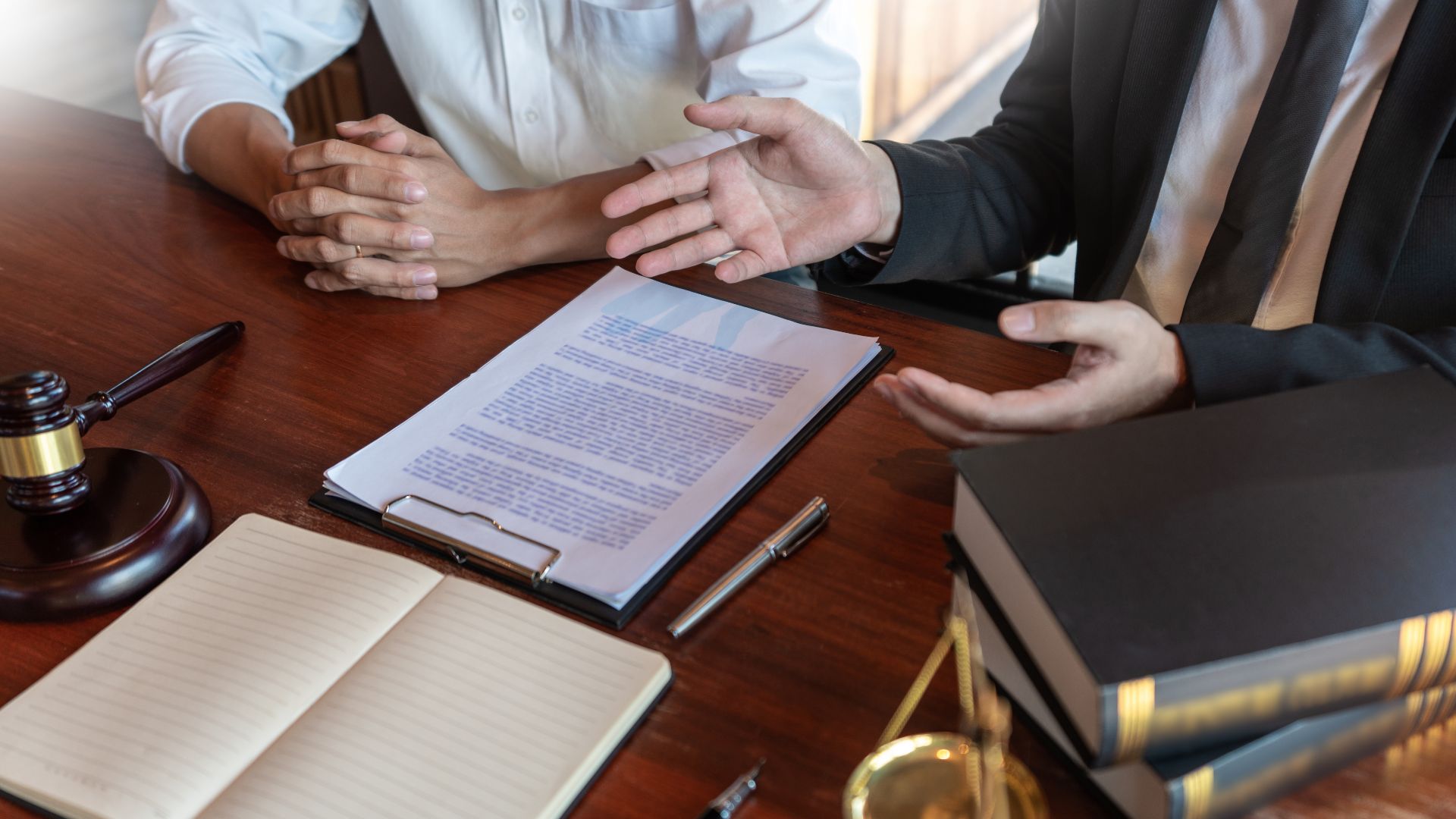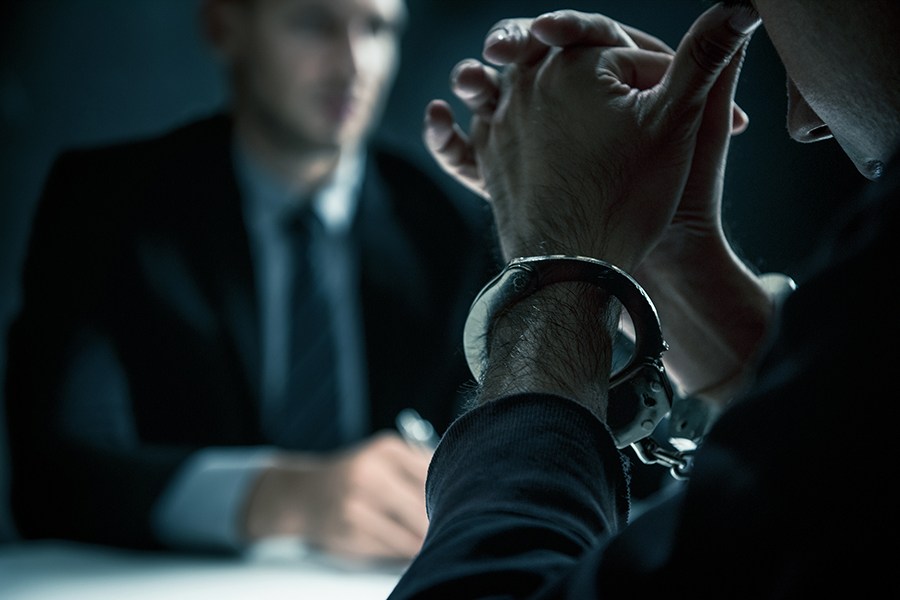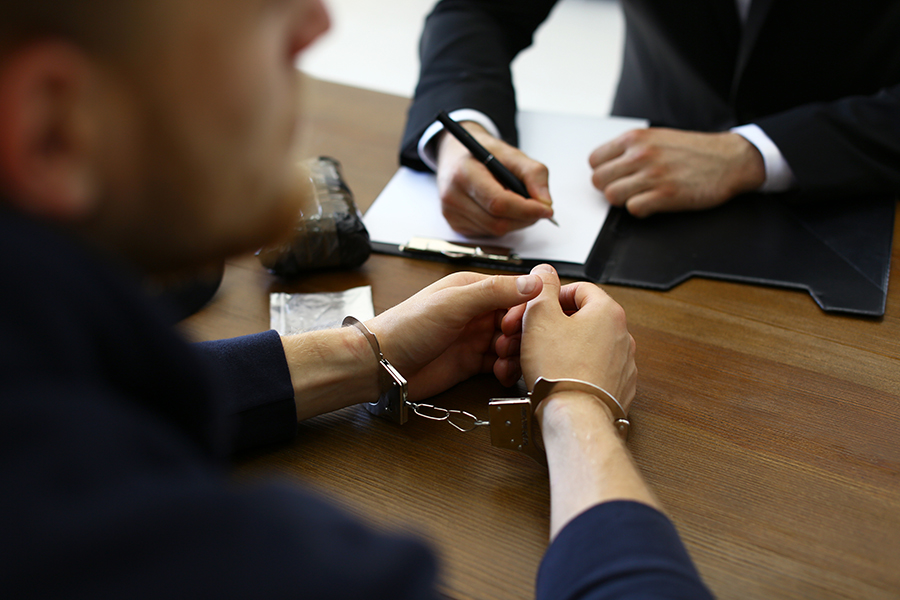
Oct 17, 2023
Understanding the distinctions between various offenses is paramount, particularly when it comes to crimes as serious as rape and statutory rape. While both involve non-consensual sexual acts, they differ significantly in their legal definitions, consequences, and the underlying circumstances that lead to criminal charges.
The primary focus of this article is to highlight the difference between statutory rape and rape. Get in touch with us at Manshoory Law Group if you have been charged with any of these offenses. We will help you build a solid defense strategy. Call us at (877) 977-7750 for a free consultation.
What is Statutory Rape?
In California, statutory rape refers to consensual sexual activity between an adult and a minor who cannot legally consent to sexual intercourse. The age of consent in the state is 18 years. Therefore, engaging in sexual intercourse with someone under 18, even if the minor willingly participates, is considered statutory rape.
California Penal Code Section 261.5 outlines the specifics of statutory rape. According to this statute, unlawful sexual intercourse occurs when an adult (age 18 or older) engages in consensual sexual activity with a minor (under 18). The law acknowledges that the child may willingly participate, but the rationale is that the minor lacks the legal capacity to provide valid consent.
Note that there are no “Romeo and Juliet” laws in California. Sexual activity with a minor is always illegal, even if you are close in age.
The Penalties for Statutory Rape
Statutory rape can be charged as either a misdemeanor or a felony. You will most likely be charged with statutory rape as a misdemeanor if the age difference between you and the victim is not more than three years. As a misdemeanor, statutory rape attracts a jail sentence of up to one year.
On the other hand, if the age difference between the adult and the minor is greater than three years or if the minor is under 16, statutory rape is typically charged as a felony. Felony statutory rape convictions can lead to more severe penalties, including a state prison sentence of up to four years.

What is Rape?
California Penal Code 261 defines rape as the act of engaging in sexual intercourse with another person under any of the following circumstances:
- Lack of consent — The sexual intercourse was committed against the other person’s will or under conditions in which the perpetrator knew or reasonably should have known that the other person was incapable of giving legal consent.
- Force or fear — The act was accomplished by means of force, violence, duress, menace, or fear of immediate and unlawful bodily injury on the person or another.
- Incapacitation — The victim was prevented from resisting due to intoxication, unconsciousness, or any other condition rendering them incapable of giving legal consent.
Consent is a crucial element in California’s legal definition of rape. If a person does not willingly and voluntarily agree to engage in sexual intercourse, it may be considered rape under the law. Moreover, using force, fear, or taking advantage of the victim’s incapacitation is treated seriously and may lead to rape charges.
The Penalties for Rape
In California, rape is categorized as a felony. The punishment for rape typically includes a state prison sentence of three, six, or eight years and mandatory registration as a sex offender for life.
However, if the victim was a minor under 14, you may receive a state prison sentence of up to 13 years. Moreover, the judge will lengthen your imprisonment term to up to 11 years if the victim was between 14-17 years old. You may also receive an additional three- or five-year prison term if the victim suffered great bodily injury due to your actions.
A rape conviction is also considered a strike under California’s Three Strikes Law. If you get convicted of another serious felony later, your penalty will be automatically doubled. Then, if you pick up a third conviction of another serious felony, you may get up to life in prison.
Difference Between Rape and Statutory rape
Statutory rape and rape, both encompassing non-consensual sexual activity, differ significantly in their legal definitions, the role of consent, the age of involved individuals, and the corresponding penalties. Below, we discuss the difference between rape and statutory rape:
Legal Definition
Statutory rape pertains to engaging in sexual intercourse with a minor below the legal age of consent, regardless of the minor’s willingness. The focus here is on the age of the individuals rather than the use of force or coercion.
Conversely, rape involves engaging in sexual intercourse without the other person’s explicit consent. This is normally achieved through force, violence, or coercion.

Consent
Consent holds no legal standing in statutory rape cases. Even if the minor willingly participates, the law deems it non-consensual due to the minor’s inability to provide valid consent. In contrast, the presence or absence of consent is central in distinguishing consensual acts from rape.
Age of the Individuals
Statutory rape centers around the age difference between the parties, focusing on whether one person is below the legal age of consent. In contrast, the age of the individuals is not determinative in rape cases, where the primary consideration is the issue of consent and the potential use of force or coercion.
Penalties
Statutory rape is categorized as a wobbler, meaning it can be charged as either a misdemeanor or a felony. The severity of the penalties varies based on the circumstances of the case.
In contrast, rape is classified as a felony with more severe consequences. Penalties for rape may include imprisonment in state prison for up to eight years, mandatory sex offender registration for life, and other potential legal ramifications.
Legal Defense Strategies for Statutory Rape and Rape Charges
Defending against statutory rape and rape charges requires a comprehensive legal strategy, as these are serious and complex criminal offenses. The specific approach will depend on the unique circumstances of the case, but here are some common defense strategies:
- Consent — In rape cases, consent is a central issue. If you can establish that the sexual activity was consensual and that the other party willingly participated, it can be a crucial defense. Gather evidence that supports the presence of genuine consent, such as communication records or witness statements. However, consent is not a valid defense in statutory rape cases.
- Age of consent — In statutory rape cases, proving the alleged victim was 18 years or above can be a strong defense.
- Alibi — If you prove that you were not present at the location or time the alleged offense occurred, this can be a strong alibi defense.
- Insufficient evidence — Your attorney can challenge the prosecution’s evidence by highlighting inconsistencies, unreliable witnesses, or lack of physical evidence.
- Illegal search and seizure — Evidence obtained through an unlawful search or seizure may be inadmissible in court. Challenging the legality of the evidence can be a viable defense strategy.
Sometimes, negotiating a plea bargain may be in your best interest, such as a lesser offense or less severe penalties. This can be a strategic way to minimize the potential consequences.
The best way to build a solid defense is to consult a qualified criminal defense attorney specializing in sexual assault cases. An experienced attorney will assess the specific facts of your case, craft a strong defense, and represent your interests in court.
Need an Experienced Criminal Defense Attorney? Contact Us Today for a Free Consultation
At Manshoory Law Group, we specialize in criminal defense. We can provide expert guidance for individuals facing California statutory rape and rape charges. Our experienced attorneys are committed to safeguarding your rights, constructing a compelling defense, and pursuing the best possible outcome for your case.
Contact us today for a free, confidential consultation, and let us stand by your side as you navigate the legal complexities ahead. Call us at (877) 977-7750.

Sep 19, 2023
A lot of people aren’t sure about the specific meanings of certain legal or criminal terms, especially those that sometimes seem to be used interchangeably, like larceny vs theft. However, when it comes to theft vs larceny, there is a clear distinction. So, if you’re wondering about what is larceny and theft, this guide will cover all you need to know.
What is Larceny?
Let’s start off our larceny vs theft guide with a closer look at larceny. Larceny is the term given when someone takes the property of another person or entity unlawfully. In general, larceny is simply a type of theft, with specific elements that must be met for it to qualify as “Larceny”. Here are the main elements to watch out for:
- Taking and carrying away – In terms of larceny vs theft, larceny usually involves someone physically taking an item or piece of property from another person or group.
- Personal property of another – The term “Larceny” is usually used in situations where a physical piece of property is taken, rather than something digital or immaterial.
- Without consent – For a crime to count as larceny, the property needs to have been stolen without the consent or permission of the owner.
- With the intent to permanently deprive the owner – The ultimate aim of larceny is to take something away from an owner on a permanent basis.
Common examples of larceny may include someone shoplifting food from a store, pickpocketing a wallet from a person in the street, or stealing a bicycle that was left outside a home.

What Is Theft?
To understand what is larceny or theft, we also need to know how theft is defined. Theft is a very broad and general term for all sorts of stealing, which can include the stealing of physical items, as well as identity theft, grand theft auto, theft of a business’s intellectual property, and so on.
Just like larceny, theft has several key elements:
- Unlawful taking – Theft must involve the unlawful stealing or taking of something from another person or entity, like a group or business.
- Personal property, services, etc. – While larceny is primarily concerned with physical items, theft can also include stealing services, identities, and so on.
- Without the owner’s consent – Like larceny, theft only concerns situations where something was taken without consent from the owner.
- With the intent to permanently deprive the owner – Again, like larceny, theft must always be with the ultimate intent of taking something from the owner permanently.
Some common examples of theft may include the burglary of a home, a robbery of a business, or embezzlement of funds.

Larceny vs. Theft: What is the Difference
When we look at the overall definitions and elements of theft vs larceny, there are lots of similarities. However, every criminal defense attorney understands the difference, and it’s important to know what separates larceny from other forms of theft:
- In general, larceny is legally defined in most locations as a form of theft. Theft is a broader term that encompasses different types of stealing, while larceny is concerned with the stealing of physical property from its owner.
- There are also jurisdictional differences between larceny and theft. Some jurisdictions may treat larceny and theft the same way, but others may have slightly different definitions and interpretations, which could lead to different punishments.
- Following on from the previous point, larceny may have different punishments compared to various other forms of theft. In general, given that theft is a broader term, it can lead to a much wider range of punishments and sentences.
- Given the similarities between theft and larceny, it’s common for confusion to occur when dealing with these kinds of cases. For example, an accused individual may want to understand their employee rights when accused of theft and how those rights differ in cases of larceny. This is why it’s vital for defendants to have access to legal aid.
How Does California Define Larceny and Theft?
In general, the state of California uses the terms theft and larceny interchangeably. Crimes that involve stealing property from others can be categorized as either theft or larceny, and this can cause confusion. A Los Angeles Theft Crimes Lawyer can help defendants understand the details of their case when facing larceny charges regarding stolen items or the theft of property.
As we can see, understanding the intricacies between a theft charge or larceny criminal charges isn’t always easy. There’s a lot of confusion, especially as states can have different definitions and approaches to larceny and theft. If you’ve been charged with either crime, a criminal defense attorney can help. Contact us for a free consultation.

Sep 15, 2023
Few charges hold as much weight as those involving bribery of a witness. For individuals facing such allegations, the complexities of the legal system can seem overwhelming, placing their freedom and reputation on the line.
As a trusted criminal defense law firm dedicated to safeguarding our clients’ rights, we at Manshoory Law Group understand the anxiety and uncertainty that come with these charges. We firmly believe everyone deserves a fair chance to present their side of the story and receive diligent legal representation. Call us today at (877) 977-7750 for a free consultation if you have been charged with bribery of a witness.
The California Legal Definition of Bribery of a Witness
In California, bribery of a witness is a serious criminal offense that is defined under Section 137(a) of the Penal Code. This statute outlines the specific actions that constitute bribery of a witness and the potential penalties that can be imposed upon conviction.
According to the California Penal Code Section 137(a), bribery of a witness occurs when a person directly or indirectly offers, gives, or promises to give anything of value to a witness or a person about to be called as a witness, with the intent to:
- Influence testimony — Corruptly influence the testimony of the witness in an official proceeding, whether that proceeding has already commenced or is anticipated in the future.
- Induce absence — Induce the witness to be absent from any official proceeding where their testimony may be material.
Note that bribery of a witness charges are not limited to situations where a witness has been successfully influenced or where an official proceeding has been disrupted. The mere act of offering, giving, or promising something of value with the intent to achieve any of the outcomes mentioned above constitutes a criminal offense.
What the Prosecution Must Prove
In a prosecution for bribery of a witness in California, the prosecutor must prove several key elements. These elements must be proved to the standard of beyond a reasonable doubt to secure a conviction.
This is because they are crucial components of the case and establish the foundation for the charges against the defendant. The elements that the prosecutor must prove include the following:
- Offer, giving, or promising something of value — The prosecutor must establish that the defendant offered, gave, or promised something of value to a witness or a person about to be called as a witness. This could include money, gifts, favors, services, or any other form of consideration.
- Intent — The prosecutor must demonstrate that the defendant acted with the intent to corruptly influence the witness’s testimony or induce their absence from the legal proceedings.
- Official proceeding — The prosecutor must establish that the witness was involved in an official proceeding. This includes any legally recognized court or administrative proceedings, such as trials, hearings, depositions, and other formal processes.
- Knowledge of witness’s role — The prosecutor must show that the defendant knew that the individual to whom they offered, gave, or promised something of value was a witness or a person about to be called as a witness.
Remember, the burden of proof lies with the prosecution. You may be acquitted if the prosecution fails to prove any of these essential elements to the required standard of beyond a reasonable doubt.
What are the Penalties for Bribery of a Witness?

Being convicted for bribery of a witness can lead to significant legal consequences. In California, bribery of a witness is classified as a felony.
Generally, the penalty for bribery of a witness is an imprisonment term of up to four years. Sometimes, the judge may place the defendant on felony probation instead of or in addition to imprisonment. Typically, the probation term will last for up to two years.
If you are a non-citizen, you may face negative immigration consequences upon conviction. For instance, you may get deported or become marked as “inadmissible.”
Possible Legal Defenses to Bribery of a Witness
When facing charges of bribery of a witness, it is crucial to mount a strong legal defense to protect your rights and achieve the best possible outcome for your case. While the specific defenses that can be employed vary depending on the unique circumstances of each case, here are some possible legal defenses that a skilled criminal defense lawyer might explore:
- Lack of intent — One of the key elements the prosecutor must prove is the intent to corruptly influence the witness’s testimony or induce their absence. If your actions were misunderstood, taken out of context, or lacked the necessary corrupt intent, your defense attorney can argue that you did not have the requisite mental state for the crime.
- Duress or coercion — If you were compelled to offer a bribe due to threats, force, or coercion from another party, you might be able to argue that you acted under duress and did not willingly engage in the bribery.
- Entrapment — If law enforcement officers induced or coerced you into committing the offense when you would not have otherwise done so, you might have a valid entrapment defense.
- Lack of knowledge — If you were unaware that the individual you offered something of value to was a witness or was about to be called as a witness, your attorney might argue that you lacked the necessary knowledge for the charge.
- Insufficient evidence — Your attorney can challenge the evidence presented by the prosecution and highlight any inconsistencies, contradictions, or lack of conclusive proof of your guilt.
- Misidentification — If there is a possibility of mistaken identity or misidentification, your attorney can present evidence to support this defense.
- Constitutional violations — If your rights were violated during the investigation or arrest process, such as illegal search and seizure or improper questioning without Miranda warnings, your attorney can argue that the evidence obtained in violation of your rights should be excluded.
- Testimonial privilege — In some cases, individuals have certain privileges that protect them from disclosing certain communications or information. If your actions were based on protected communications, your attorney can argue that the testimony should be privileged.
- Character witnesses — Your attorney may present character witnesses or evidence of your good reputation to counteract the negative portrayal presented by the prosecution.
Remember, every case is unique, and the effectiveness of these defenses will depend on the specific details of your situation. It is crucial to work closely with a skilled criminal defense lawyer who can analyze the facts, gather evidence, and craft a defense strategy tailored to your case’s strengths and weaknesses.
What Other Criminal Offenses are Related to Bribery of a Witness?

There are three criminal offenses closely related to bribery of a witness. These criminal offenses include the following:
- Bribery of an executive officer — Penal Code 67 states that it is unlawful to bribe an executive officer. Here, an executive officer means individuals such as the District Attorney and police officers. The general penalty for this criminal offense is an imprisonment term of a maximum of four years.
- Bribery of a legislator — Penal Code 85 makes it illegal to bribe a legislator or use corrupt means to influence their voting decisions. Here, a “legislator” includes state legislators and those of a city or county board. The punishment for this offense is an imprisonment term of a maximum of four years.
- Bribery of a judicial officer — Penal Code 92 makes it a felony to offer or give a bribe to a judicial officer, such as a judge, arbitrator, or juror. The penalty for this offense is a state prison sentence of up to four years.
Noting the grievous penalties associated with these offenses, you will need to build a solid defense strategy if you have been charged with any of them. Hiring a skilled criminal defense lawyer can greatly bolster your chances of winning the case.
Need a Criminal Defense Lawyer? Contact Us Today for a Free Consultation!
If you find yourself charged with bribery of a witness, take the proactive step of securing experienced legal representation. Our team at Manshoory Law Group is here to listen, understand, and advocate for you.
Your future is worth protecting, and we are ready to guide you through this complex legal journey. Do not navigate these charges alone. Call us today at (877) 977-7750 for a free consultation, and let us start building your defense.

Aug 16, 2023
Aiding an individual who has engaged in unlawful activity in certain manners could lead to facing charges for the criminal offense known as being an accessory to a crime. There can be two categories of accessory to a crime:
Accessory before the fact, which involves assisting another person before they carry out a murder or crime. This might entail purchasing a firearm for someone with the awareness that it will be used to inflict harm on another individual.
Accessory after the fact, which involves supporting another person after they commit a crime. For instance, this could involve providing transportation in a getaway vehicle following the killing.
What is an Accessory After The Fact
Supporting and assisting a convicted felon or someone facing felony charges is unlawful. The reality is that if you engaged in certain illegal activities you could be charged as an accessory after the fact in California. Now, you have created legal troubles for yourself. The law is not concerned with your relationship and bond with the person you helped protect from their legal obligations. Being an accessory after the fact puts you in the crosshairs of the law.
There are several reasons a person may offer aid to another person who is facing arrest, has a court date, or was convicted of a crime. When it comes to those that you care for and love, if their future is grave due to their legal situation, you may be motivated to help them in some way in an attempt to keep them from having to endure a harsh penalty. And, while your intentions may be earnest, if you shelter, conceal, or otherwise aid a felon, this is a crime in the state of California. The crime is known as “accessory after the fact.”
If you were arrested for being an accessory after the fact, you might be confused about what your charges are and what they mean for your future. In this situation, you need experienced and seasoned legal counsel to help you with your case. The Los Angeles criminal defense attorneys at Manshoory Law Group can meet with you and discuss your legal predicament. It is possible to fight your charges to secure the best possible outcome, and an attorney at Manshoory Law Group is ready and prepared to build and execute the right defense strategy.
What are the Penalties for Accessory After The Fact?
It may seem like harboring someone or doing something that shields them from seeing through with their legal responsibilities is not too big of a deal. You may think this, especially if your actions were out of love for the individual that you took into your custody. The reality is that being an accessory after the fact in California means you could be facing a felony offense.
Accessory after the fact is a wobbler crime. What this means is that the prosecutor can charge you with either a misdemeanor or felony offense at their own discretion. What they will do is look at both your background and the details of the actual, alleged crime to help them figure out which level should be charged.
In fact, if an individual assists in the death of another person but is not physically there when the homicide takes place, they may face charges as an “accessory to murder“., which is a felony charge in California.
Misdemeanor charges can lead to a sentence of county jail for as long as one year and as high as a $5,000 fine. On the other hand, a felony charge could come with up to three years in state prison and a fine of up to $5,000.

Examples of Being an Accessory After The Fact
There are several ways that your actions could be seen as violating the law and fall under the accessory after the fact crime umbrella. Some of the most common examples of what it means to be charged with accessory to murder include:
- Any way you assist a felon to escape an impending arrest.
- Lying about the whereabouts of another party who committed a felony crime by providing an untrue alibi.
- Being the driver of a car that flees the scene of a felony crime.
- Hiding someone who allegedly committed a felony offense in your house while law enforcement is looking for them.
What Does the Prosecution Have to Prove To Get a Conviction?
When you are on trial for a criminal offense, you must be found guilty beyond a reasonable doubt for a conviction to ensue. So it is the burden of the prosecution to show that there is no conceivable way that you could be innocent of your charges. For the prosecution to have success with an accessory after the fact charge, they must prove the following four elements were true:
- The individual who was alleged to have been protected and concealed was actually guilty of a felony offense or actively facing felony charges.
- You had knowledge of the felony charges or the conviction of the individual in question.
- Despite knowing about a person’s felony situation, you still actively tried to hide or aid them.
- Your actions were a direct result of the individual’s legal situation, and you were trying to help them evade their trial or punishment.
Defenses for Accessory After The Fact
There may be several legal defense strategies at your disposal that can help you beat your charges. If certain factors and details in your case can be proven, then you may be able to have your charges dropped.
Examples of defense approaches for overcoming accessory to a crime or accessory of murder charges may include:
- You did not engage in certain actions as a way to help an individual that committed a felony crime avoid penalty because you did not know that they committed a felony crime in the first place. You were completely unaware of their criminality, and so your actions were not intentional concerning shielding the individual from harm.
- You were in a precarious situation at the time where you harbored the individual who committed a felony crime because you were being intimidated and under duress. You feared for your life and your own safety, so you felt forced to aid the felon.
- You took no willful action to harbor or aid a felon; you were simply a bystander who was around during the time that the felon was trying to hide themself.
Your attorney at Manshoory Law Group will do a comprehensive review of your unique situation to determine the best plan for defending you against the most severe outcomes.

Is Expungement Possible for Accessory to a Crime?
Expungement is the process of having one’s criminal record either sealed or erased. Expungement is ideal- when it is possible – because it gives a person a new lease on life without a criminal record. Essentially expungement means that the criminal conviction has been removed from one’s background.
It is never ideal to have a criminal record, no matter what the charges are. This is why it is not uncommon to want to know if there are any options for clearing one’s record so it does not adversely impact the rest of their life. In the case of an accessory to a crime conviction, expungement may be possible.
Accessory after-the-fact charged and convicted at the misdemeanor level has the potential for expungement. It is necessary that for any chance of getting your conviction expunged, you must have finished your jail or probation sentence.
Felony convictions where probation is the sentence can also possibly be eligible for expungement. But charges for accessory to murder may not always be expunged. Sentences that impose state prison for accessory after the fact, though, will not be eligible for expungement. When a state prison results, there is no possibility within the law for expungement.
Call an Attorney At Manshoory Law Group Today
When you are facing criminal charges that could lead to prison time and costly fines, as well as the establishment of a criminal record, then it is imperative that you have the best legal counsel and representation. In California, the Los Angeles criminal defense lawyers at Manshoory Law Group have the background and experience to help you secure results.
Contact an attorney at Manshoory Law Group to have the peace of mind that your attorney is entirely and wholeheartedly committed to helping you overcome your charges and get the ideal outcome. The team at Manshoory Law Group solely concentrates on criminal defense, so our team is laser-focused and not distracted by trying to engage in many other different areas of the law.
For all your questions and to have your case evaluated by a seasoned criminal defense attorney during a free consultation, please call Manshoory Law Group today at (877) 977-7750.

Aug 8, 2023
A DUI (driving under the influence) is when a person is found to be operating a vehicle while intoxicated by substances like drugs or alcohol. It’s one of the most common crimes in modern America, with over 1.5 million DUIs recorded each year. But is a DUI a felony or misdemeanor? Find out in the guide below.
So, is a DUI a felony or a misdemeanor? Well, that depends on several factors, including the location where the crime occurred and the criminal history of the person involved. When it comes to the DUI felony or misdemeanor debate, the vast majority of states class first-time DUIs as misdemeanors, but elevate the crime to a felony for repeat offenders.
When is a DUI a Misdemeanor?
In the eyes of the law, a misdemeanor is classed as a “minor offense”. This means that it isn’t punished as harshly as a felony, and is generally seen as far less serious or severe than other crimes.
When it comes to whether a DUI is a misdemeanor or felony, most DUIs will be classed as misdemeanors if it’s the person’s first offense. This is true in all states except New York, New Jersey, and Washington.
Potential Penalties and Consequences of a Misdemeanor DUI Conviction
It’s worth noting that even if a DUI counts as a misdemeanor, it can still lead to some serious punishments, including the risk of jail time. Other possible punishments may include large fines, the temporary suspension of a driver’s license, and a term at DUI school.

When is a Felony DUI?
In the US, a felony is the term used for crimes that are considered to be more serious than minor offenses or misdemeanors. These crimes are often capable of causing more damage or harm to the public and are treated more seriously overall, with harsher punishments for the accused.
Factors That Can Elevate a Dui Charge to a Felony
When it comes to DUI felony or misdemeanor, there are several factors that may cause a DUI to be treated as a felony DUI, rather than a simple misdemeanor, including:
- Prior DUI Convictions – If a person already has DUI charges on their criminal record, including misdemeanor charges, any subsequent DUI offense is likely to be classed as a felony DUI charge.
- Injury or Death – If a person is driving under the influence and causes an accident that leads to injury or loss of life, it’s also likely that they will face a felony charge, instead of a simple misdemeanor DUI.
- Suspended License – Those who are found to be driving under the influence of drugs or drunk driving while having their license suspended or revoked will also typically have to deal with felony charges.
- Child Endangerment – If you drive under the influence with a child or children in the car, this may fall into the category of child endangerment, which is more serious than simply driving alone.
Penalties and Consequences of a Felony DUI Conviction
It’s important to understand the differences between misdemeanor and felony consequences and punishments. Felony punishments tend to be more severe, involving longer time behind bars, larger fines, and much longer periods with a suspended or revoked license. Those who are charged may also need to spend lengthy amounts of time in mandatory rehabilitation programs to learn more about the risks of driving drunk or high.

Common Defenses Against DUI Charges
Now we know the answer to “Is a DUI a felony?” and how states separate DUI misdemeanor or felony charges, but what can be done in defense of a person facing one of these charges? Well, a criminal defense attorney may be able to provide certain arguments in favor of the defendant.
- They could challenge the legality of the traffic stop or checkpoint which led to the arrest in the first place.
- They may also argue against the reliability of drug or alcohol testing methods and results, as these tests are sometimes unreliable.
- They can also mount an argument against any in-field sobriety tests or judgments that were made about the driver’s state.
- There’s also a possibility of questioning the handling of evidence related to the suspected DUI, which could lead to a case being thrown out.
Role of Legal Representation in Building a Defense Case
A Los Angeles DUI Lawyer or other attorney is crucial in terms of building a valid and believable case in the defendant’s favor. Without proper legal representation, many defendants risk facing the worst possible penalties, but with the aid of a lawyer, it’s possible to vastly reduce or even avoid a sentence. Plus, lawyers can assist with other matters or answer questions you have about your DUI, like how long does a DUI stay on your record.
As we can see, DUIs need to be taken seriously, as they can result in serious punishments and lifelong consequences. If you’ve been charged with a DUI, legal help is available. Contact a trusted DUI lawyer for a free consultation.















